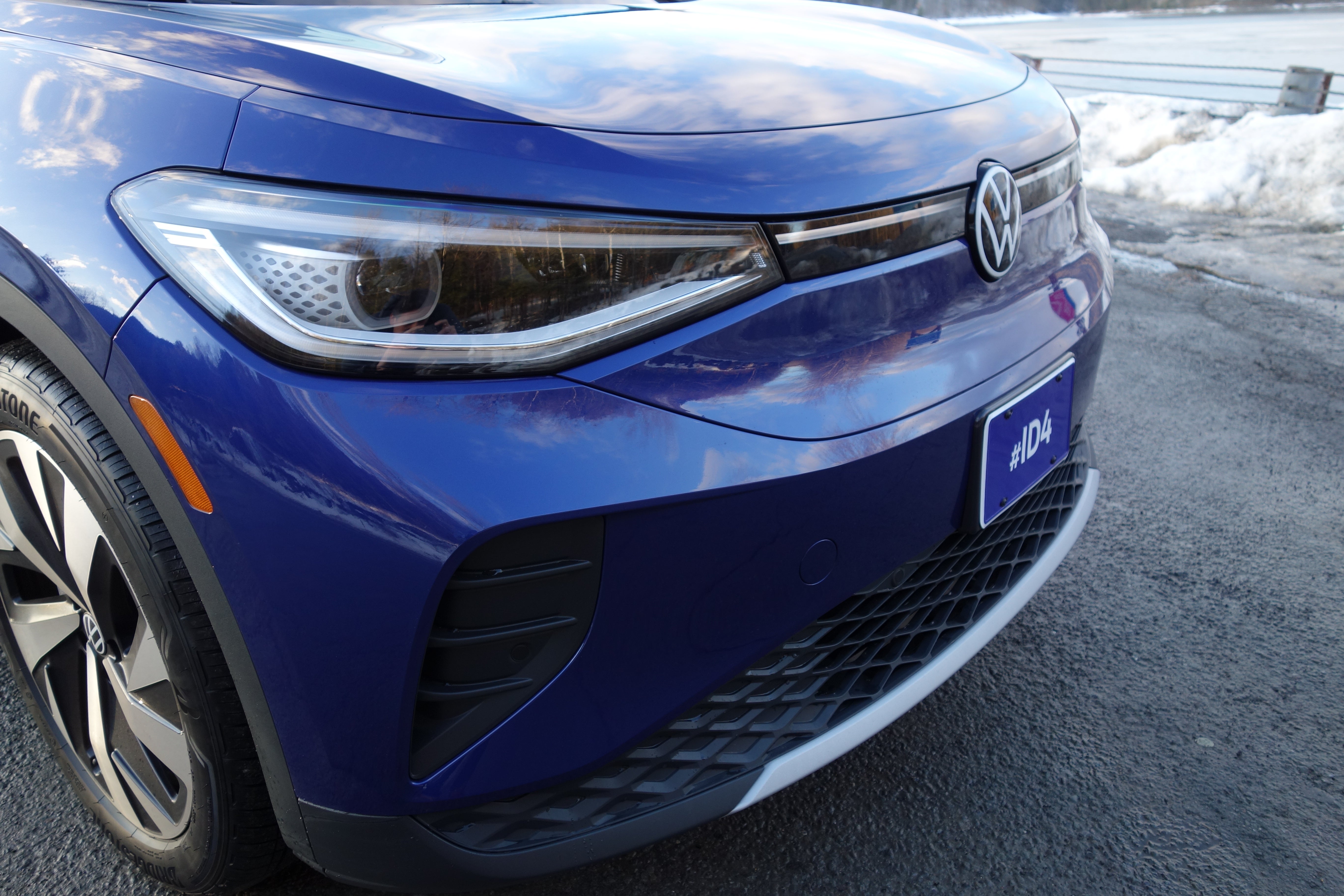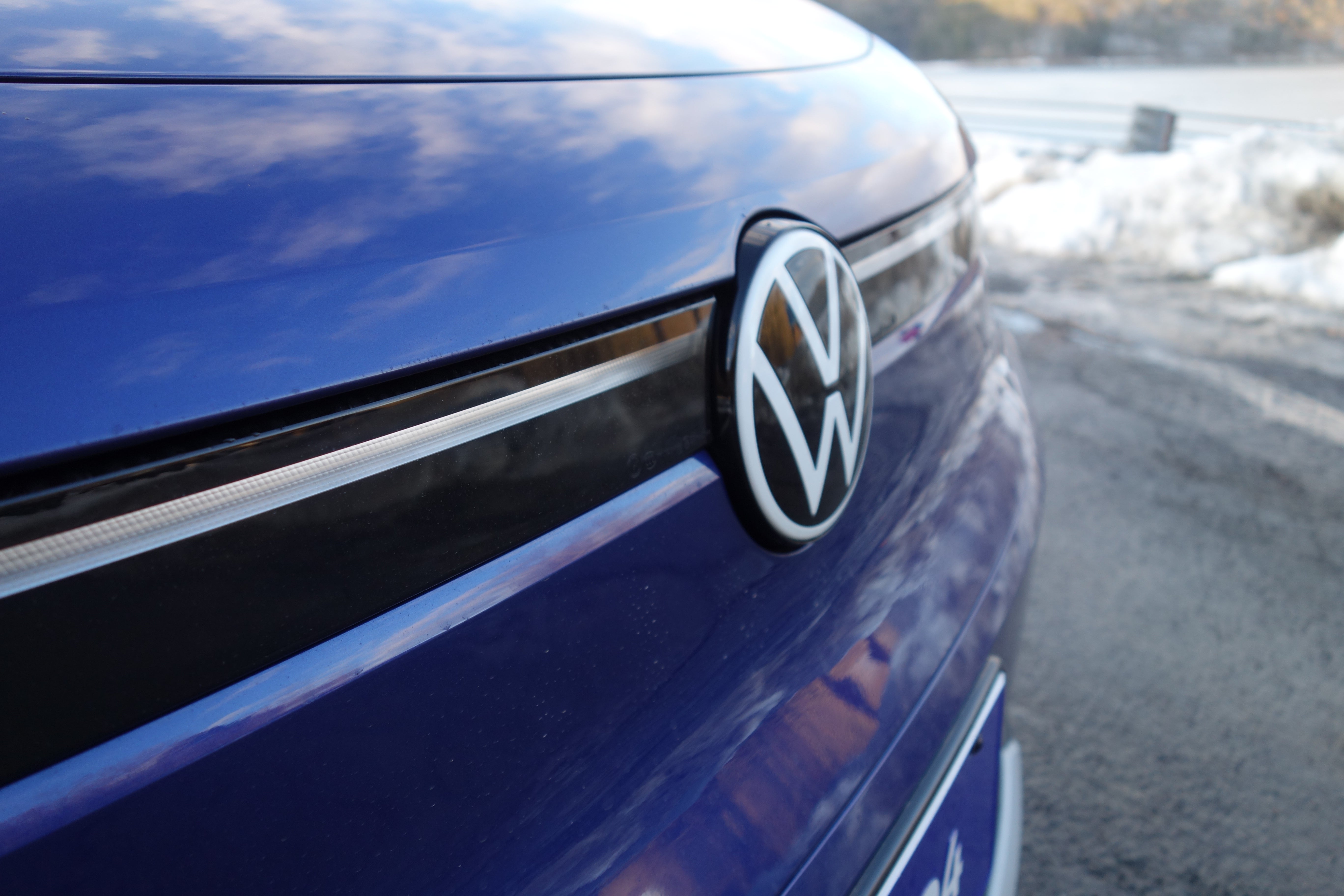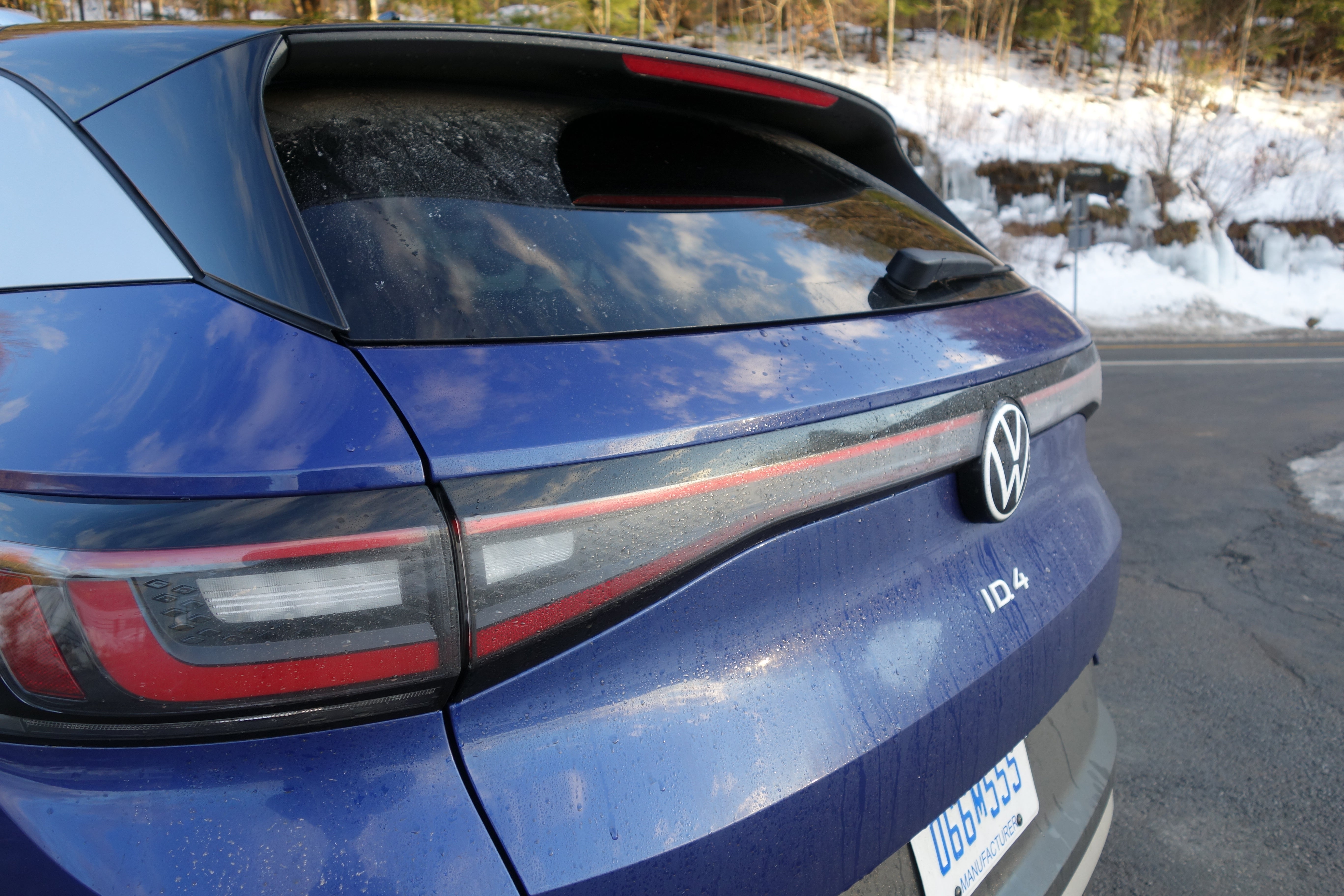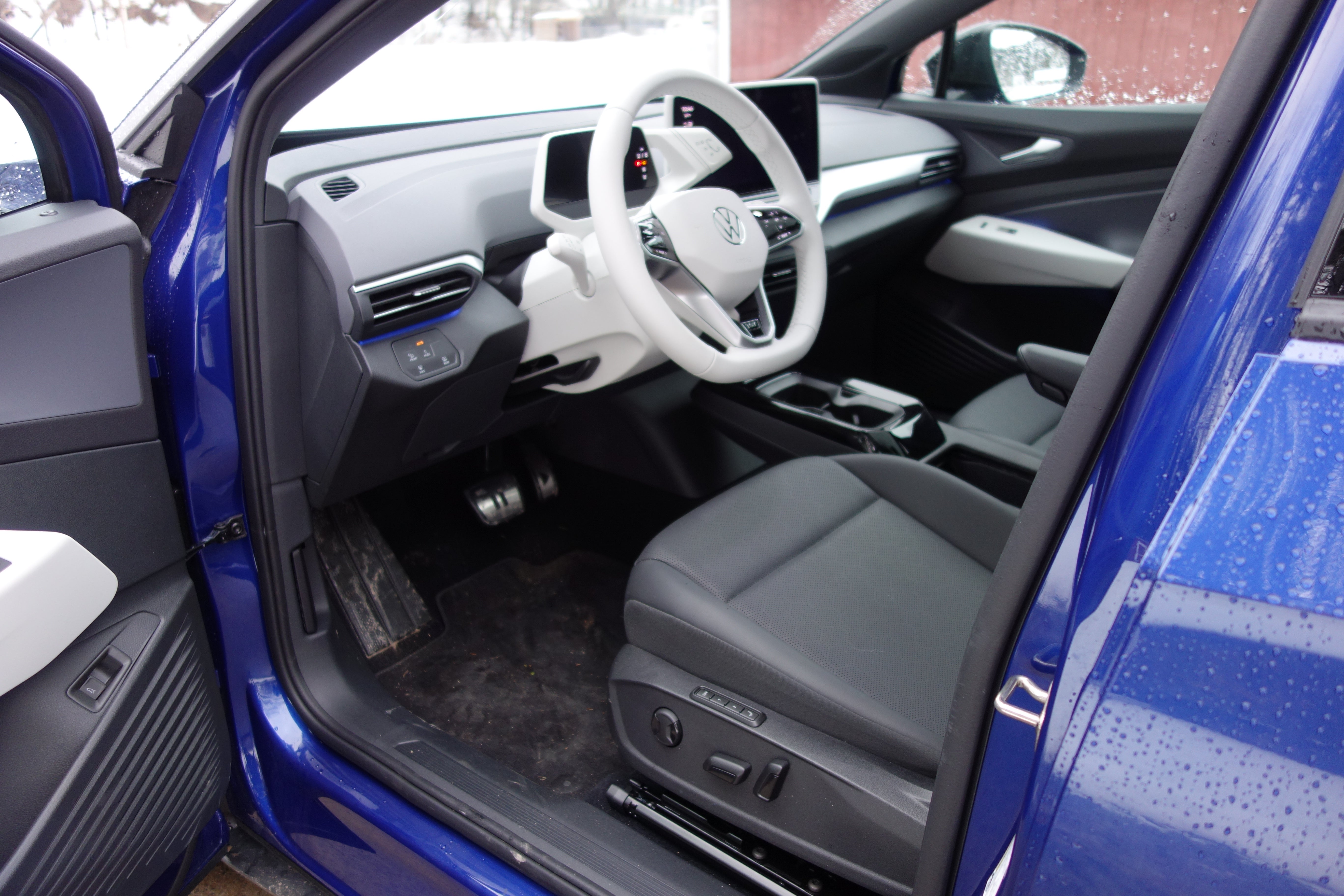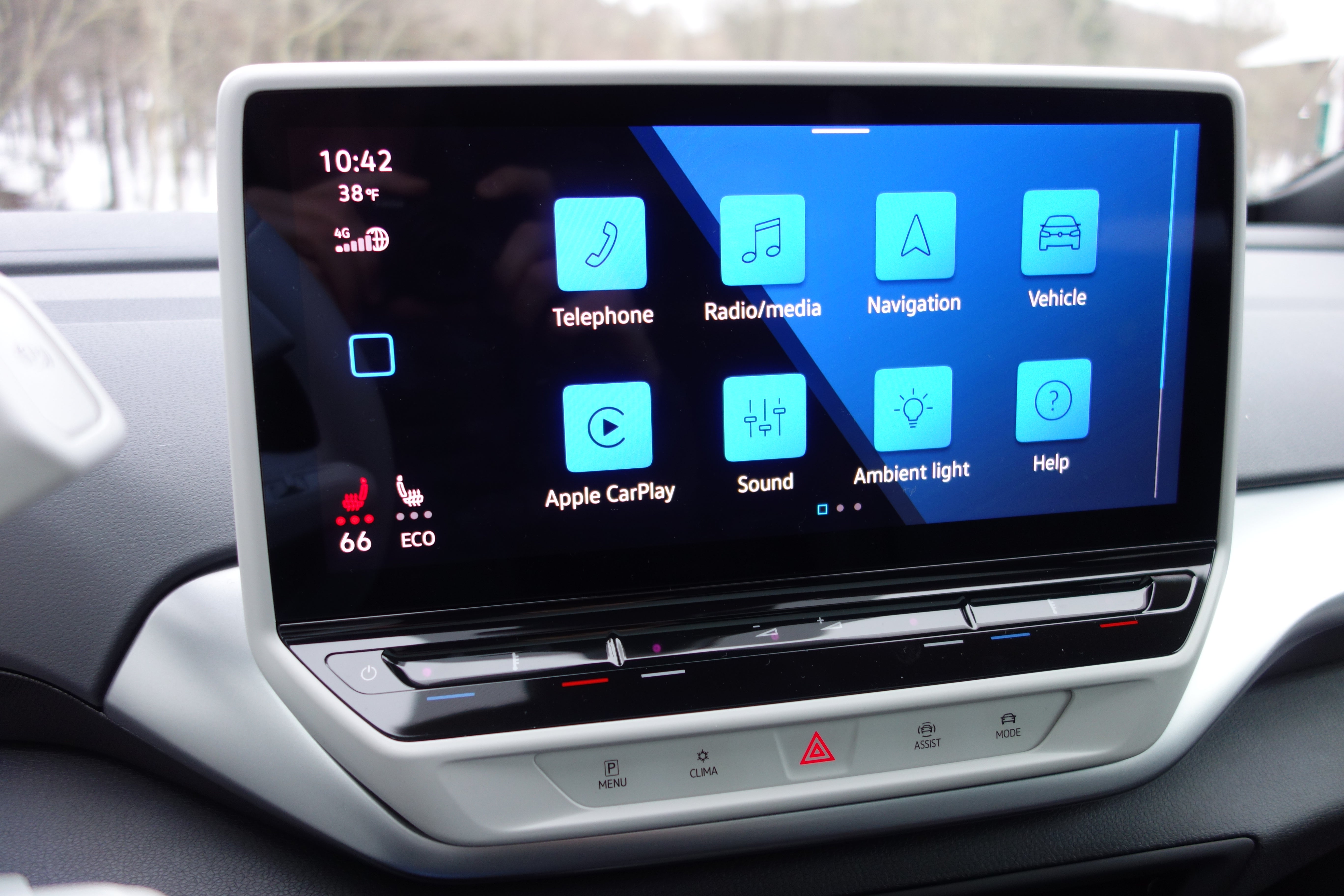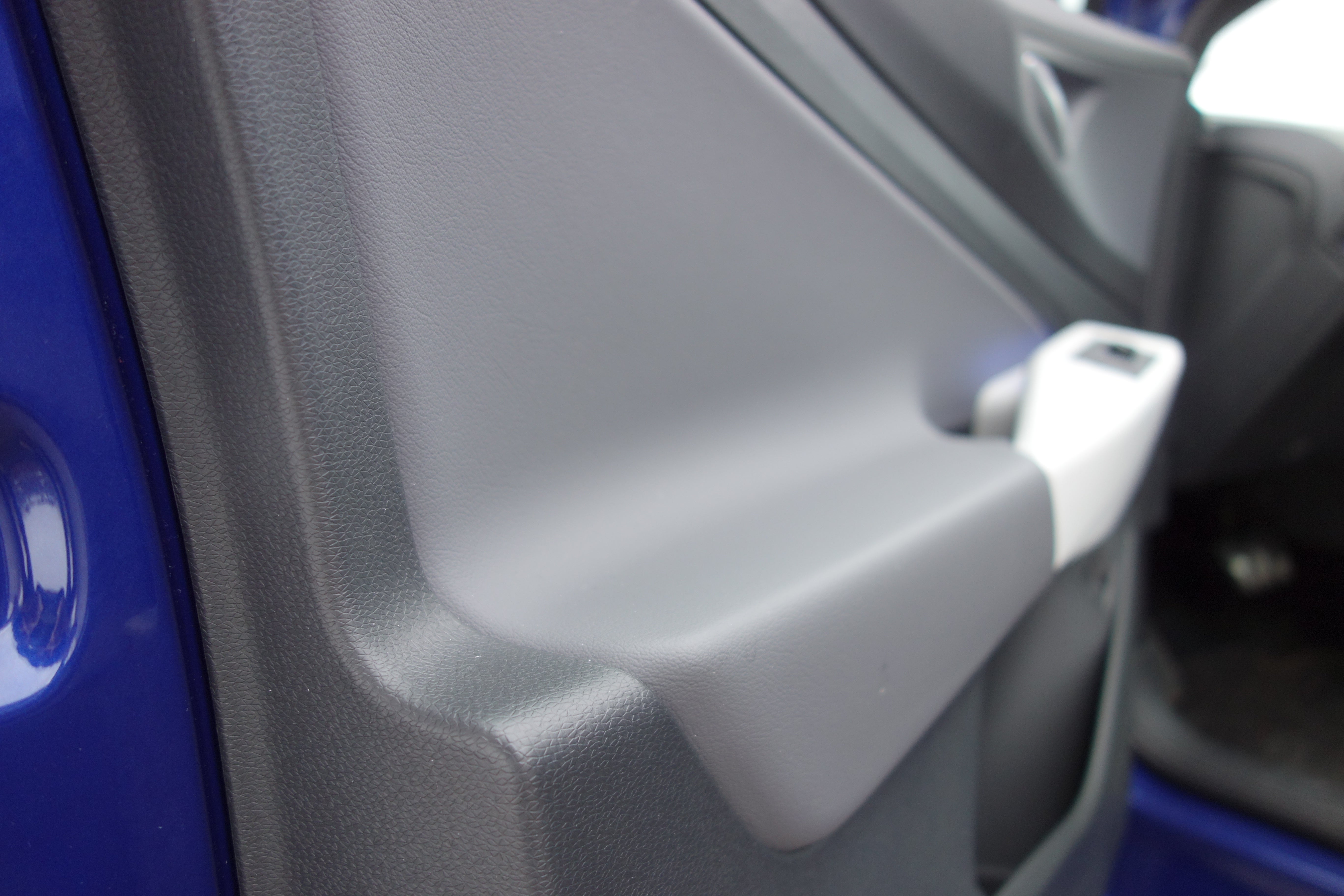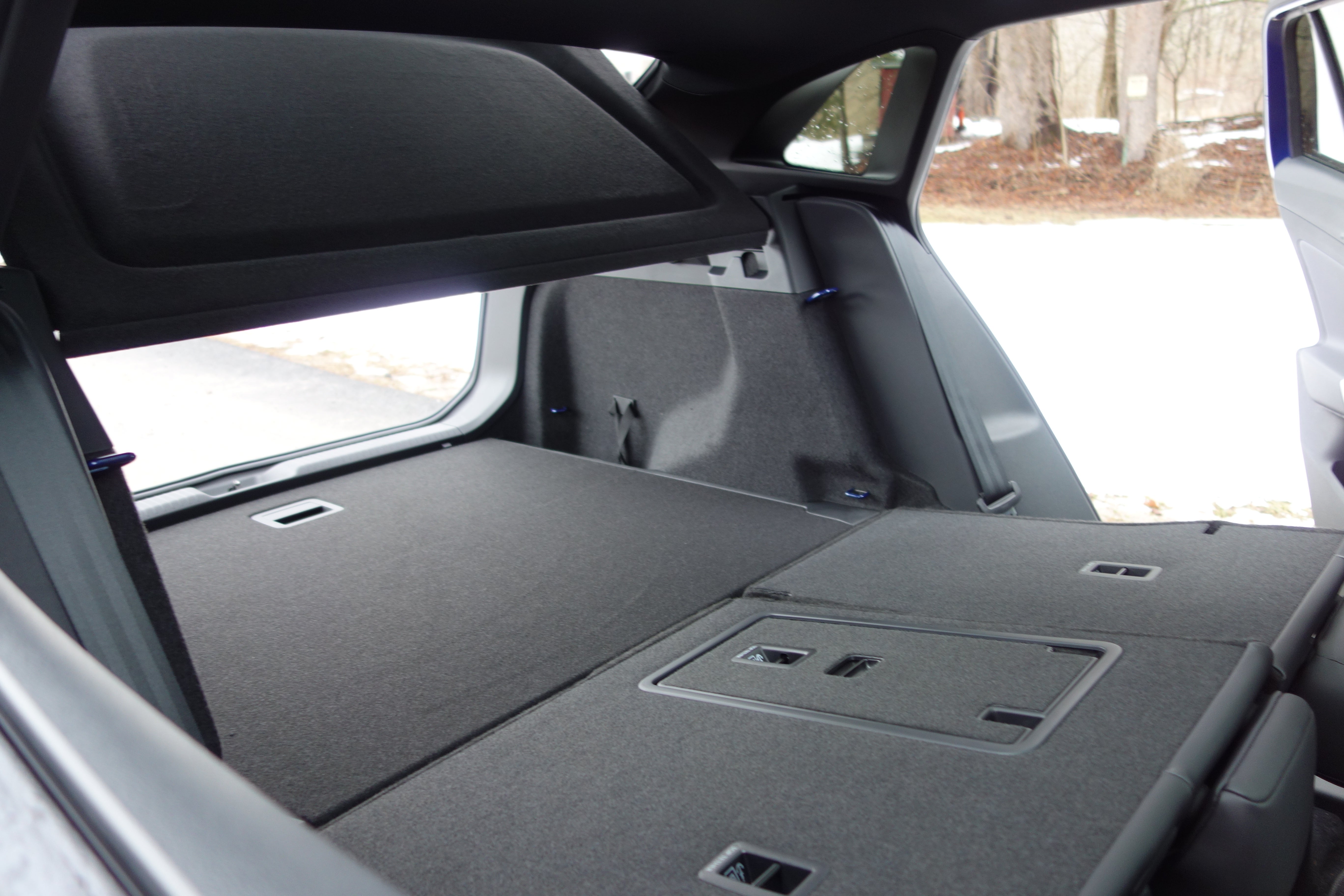The thing you have to understand about Volkswagen is that it's always been after world domination. The 2021 Volkswagen ID.4 isn't just a new electric car—it's simply the latest example of those plans in action.
Previous incarnations of Volkswagen, and the Volkswagen Group writ large, meant brand-buying sprees until Bugatti, Lamborghini and Ducati were under the same umbrella; wild concept cars with no business model attached; economy hatchbacks and $2 million hypercars in the same portfolio; and aggressive plans to finally get Americans to buy diesel cars like the rest of the world. When those plans were thwarted by our emissions regulations, orders were given to break the rules, resulting in one of the biggest scandals in modern corporate history and, subsequently, VW's aggressive, industry-leading pivot to zero-emission electric vehicles as a mea culpa.
Post-Dieselgate, VW isn't just diving into EVs the way most automakers are. It's pouring nearly $40 billion into R&D and new factories that make EVs, more than any other car company. It aims to launch its last internal combustion engines ever by the middle of this decade. It has a whole range of electric vehicles coming across all its brands. It even plans to loan its new electric platform out to other companies. Once again, VW wants to not just make cars, but to make all the cars.
It's an understatement, then, to call the ID.4 crossover a big deal. It's the tip of the spear for this ambitious EV strategy in America. And it's a chance to finally try and capture the American mainstream car buyer, something that has truly eluded VW since the days of the original Beetle and Microbus. A lot—a lot—is riding on this car.
So does the ID.4 deliver? Given the stakes, I'm not sure it ever fully could. But after a short three-day test, I think it's off to an extremely promising start even if a few areas leave a bit to be desired for now.
2021 Volkswagen ID.4 1st Edition, By the Numbers
- Base Price (As Tested): $39,995* ($43,995*)
- Powertrain: 82 kWh battery | 201 horsepower, 229 pound-feet of torque | 1-speed transmission | rear-wheel drive
- Max Towing Capacity: 2,700 pounds
- EPA Fuel Economy: 104 MPGe city | 89 MPGe highway | 250 miles of range
- Cargo Volume: 30.3 cubic feet (64.2 with third row down)
- The Promise: A kickoff to VW's electric future, aimed right at mainstream crossover buyers.
- The Delivery: A laggy infotainment system, questionable range and some interior issues don't diminish the ID.4's incredible promise.
*Note: Before any federal or state tax incentives.
I'll spare you the deep, deep dive into the ID.4's technical specs and general importance to VW's future because I covered much of that last year in an interview with Volkswagen Group of America CEO Scott Keogh. You can read that here.
Here's the crucial stuff to know: the ID.4 has an EPA estimated 250-mile range, uses an 82 kWh battery mated to a rear-mounted single electric motor, is rear-wheel-drive at launch (an all-wheel-drive, dual-motor version is coming with more than 300 HP) and is the first of many, many cars on VW's new electric MEB platform. That architecture will spawn a ton of new Volkswagen Group electric cars, including the bigger ID.6 crossover, a new Microbus, at least one sedan, and a bunch of SEAT, Skoda and Audi variants.
The ID.4 is currently built in Germany and China, and eventually, it will be made at an American factory in Chattanooga, Tenn. It, and its sibling the ID.3 hatchback, are the start of a massive, no-going-back global shift to EVs for Volkswagen that's more ambitious than any other automaker with the exception of Tesla, which has obviously always been electric. This isn't just a new car, it's a whole transformation, and it starts here.
In other words, new car, new platform, new territory, new software and a new corporate strategy. I felt a bit like a beta tester here, not just a car reviewer.
Inside And Out
It's also crucial to remember VW has aimed the ID.4 right at the most volume-selling new car segment in America: the midsize crossover market. From price to range, it's designed to go after Toyota RAV4 and Honda CR-V buyers, meeting their needs with electricity instead of gasoline, and thus capturing the U.S. mainstream like it's struggled to do for so long.
In that vein, the ID.4 is strikingly handsome but restrained. It's got a sleek, almost coupe-like shape, and the flat grille tells you right away there's no need for front-cooling an engine. In step with the current design trends, two-tone color is your only option here; the silver roof comes on all trends. My Dusk Blue Metallic tester, exclusive to the sold-out 1st Edition cars, definitely turned some heads. Call it modern and forward-thinking at once.
That feels doubly true inside, where the ID.4 offers a roomy, airy, sleek cabin that's futuristic but not to the point where it could alienate mainstream buyers. There are a few unique EV quirks here, but overall it's quite user-friendly, and there are some clever touches at work. For example, you don't push a button to start anything, although there is a redundant button on the steering wheel column. You just get inside, twist the drive selector to drive or reverse, and go. (Twist it to "B" to engage regenerative braking and one-pedal driving.) When it's time to leave, you hit the park button and step outside, and the ID.4 turns off. It even pre-loads your climate settings when you come back.
I am a fan of the optional Electric White interior trim. The steering wheel and other accents never got dirty in my care. In fact, it made me wonder why we defaulted to beige and black for all our interior needs. How did that happen? Where did the fun colors go? Here, the white is clean, crisp and, again, very modern. It has a distinct Apple Store vibe to it. There's also a decent amount of physical controls, and they do smart things—if you're on the navigation screen and need to adjust the air conditioning, hit the climate button, then that same button again to go back to the map when you're done.
It falls down in several other interior areas, though. The doors and dashboard are made of a hard, bumpy, flimsy plastic that feels deeply out of place on this mid-$40,000 car (before incentives, but still.) Some material quality decisions are absolutely inexcusable here. The haptic touch panels on the steering wheel and below the center screen don't feel as certain as actual buttons. And why does the driver's door only have buttons for the front windows? Strange way to cut costs.
The ID.4 remains a comfortable and functional place. The seats are well-bolstered and great for long drives; no complaints there. The back seats have more legroom than expected and plenty of headroom for my 5' 11" frame. You get a cargo volume of 30.3 cubic feet behind the second row, and up to 64.2 cubic feet with the seats folded. The rear seats still fold at a bit of an angle like most crossovers, but it could pull hauling duty nicely if needed. No frunk here, though, but otherwise plenty of room for car seats and kid gear.
All in all, it's a mix of our exciting electric future, and a base, gas-powered Golf inside—cutting-edge EV tech meets European rental car. I wish VW had spent a bit more time making the interior feel more cohesive at this price point.
Ambitious Tech
Besides the aforementioned just-get-in-and-out start and shutdown stuff, the ID.4 packs technology that makes a RAV4 feel like something out of the last century. There's a good deal of ambient interior lighting, and you can fully customize the color experience. An LED light bar across the dash even runs from side-to-side during navigation, telling you where to turn. Isn't that fun? This car is very much aimed at families and your kids will love that.
All of this is controlled from VW's new infotainment system, used here on the larger optional 12-inch display, where yet it again has a decidedly Apple-like feel. Big, square icons, a home button, voice controls, you name it. Redundant button controls back it up so the learning curve isn't that steep, but it's very much the heart and soul of controlling this machine. From there, you can configure just about every kind of setting, from safety systems to auto-climate to saving your preferred public charging stations. It also points you to charging stations upon request; overall, the car is very good at helping you find electrons.
But the infotainment system does feel a bit buggy. I did not experience the total freezes that some reviewers reported, but switching between menus was laggier than it should've been. It's also difficult to navigate to certain menus, like if you just want to be on a radio station screen. As with most new cars, I preferred the experience of Apple CarPlay, which is wireless here, as is device charging. That should be standard on every new car now, if you ask me. (It has Android Auto too.)
As for safety features, you get adaptive cruise control, automatic emergency braking, pedestrian detection, blind-spot monitoring, and lane departure warning with lane-keeping assistance—all the usual stuff buyers are after in this segment. Overall, the ID.4 is remarkably competitive on these fronts.
On The Road
After a few days behind the wheel, my takeaway is that the ID.4 is... a car. It's a car! It drives and goes places. It's not bone-crushingly fast like a Porsche Taycan Turbo S, but it's not slow, either. It definitely feels more sprightly than its 201 HP rating would imply, and certainly for its beefy 4,200-pound curb weight. The zero to 60 mph dash is said to happen in about 7.4 seconds; I would've guessed it's quicker than that.
Despite being RWD, it's not exactly tail-happy, but it's surprisingly fun on a good backroad. The instant electric torque, low center of gravity from the floor-mounted battery and the ability to easily modulate your speeds going into a corner with regenerative braking make the ID.4 pretty enjoyable for a family-hauler. The chassis is extremely planted and body roll is minimal.
Let me put it this way: on the same winding country road, given the choice between an ID.4 and a Honda CR-V, I'd take the Volkswagen every time. It may not be a Tesla Model S with Plaid Mode, but it's much, much more fun than most blah-mobile crossovers in this segment.
Around town, it's quiet (naturally, and the factory sound system is great), comfortable, rides smoothly and brakes with confidence. It glides along without drama or, most of the time, excitement. Not every EV is going to have wild features like Crab Mode; VW is going for normal here, and the ID.4 is very normal.
Range and Charging
Every ID.4 comes with three years of free Electrify America charging, which was part of that pesky Dieselgate settlement with the U.S. government. The public charging network in America is still nowhere near where it needs to be given every automaker's EV ambitions, but I suspect nearly all ID.4 owners will opt for home charging. I don't know why you wouldn't.
I don't have one at my house (it's on the product roadmap for Q2) so I charged my ID.4 tester at various ChargePoint 7.4 kW stations nearby. Those are pretty slow; it takes several hours, or an overnight charge, to get you anything meaningful. VW says a public, 125 kW DC fast-charging station can take the ID.4 from 5 to 80 percent in about 38 minutes. I did not get a chance to test this feature as all the fast chargers are pretty far from where I live, but I hope to later this year. Charging is extremely simple: Open the port, insert charger, lock the car, confirm on the app or the station that it's charging, walk away.
(It is also worth noting that every public ChargePoint location I have encountered is a sad, neglected place, often covered in snow and/or trash. They all feel like someone installed them a while back and then completely forgot about them. America's current charging network really is a joke.)
I do have some concerns around what I'd call range inconsistency. I had the ID.4 during a cold upstate New York week, but it wasn't that cold—mostly in the 30s and low 40s. On one highway drive home, I shed range much more quickly than expected at 80 mph. In another instance, I charged the ID.4 to 152 miles (about 69 percent) and faced a 22-mile drive home, only to lose 38 miles of range in the process.
The route home involved a very slightly spirited drive and two quick stops for photos, in 38-degree weather. So I was quite surprised by that level of drop-off. I do wish it gave me a broad range, like the Chevrolet Bolt does, rather than a hard number. Additionally, Car and Driver achieved 190 miles of range on their cold-weather highway test—far less than the advertised 250 miles. But VW's certainly not the only EV maker to be potentially off here.
(Update: After publication, a Volkswagen spokesman sent the following statement in response to Car and Driver's test and our citation of it: "Our cars are rated on the industry standard—and legally mandated—EPA test cycle. The EPA test cycle operates on city and highway, and displays both separately to the customer. The Car and Driver test is very specific and only considers highway driving, at high speed. Even so, the ID.4 produced an MPGe number that was close to the EPA’s highway figure, despite being conducted at a higher speed and in sub-optimal temperatures.")
I feel more testing is needed here to determine how accurate the range estimates truly are, and in different conditions. The ID.4 does over-the-air updates like Tesla does, and everyone knows the ID.3 in Europe was plagued with software issues at the outset. (That, in part, cost VW's CEO his job last year.) My educated guess is that the platform still has some teething issues, and OTA updates may adjust the range consistency and the laggy infotainment system.
Until then, is the ID.4 a car you want in its very first model year? I'm not convinced it is. If it were my dollars on the line, I'd wait until 2022 and see what happens.
Early Verdict
I'm still not a fan of the interior materials used on the ID.4, and I'm eager to see how my software-related concerns shake out. But the ID.4 largely nails what it sets out to do: be a car, or the car, that helps a long-term EV transition for a lot of families.
The $43,995 price for my 1st Edition tester may raise some eyebrows, but those are sold out anyway; a standard ID.4 Pro starts at $39,995. Then there's the federal tax rebate of $7,500, plus any incentives your state offers. They quickly drop the ID.4's price into the mid-to-low-$30,000 range. I'd be looking at up to $9,500 off between state and federal tax rebates here in New York. That puts the ID.4 on par with the average new car cost (or well below it, as of early this year) and makes it an awfully compelling value proposition.
Emotionally, I am not blown away by the ID.4. It's a bit appliance-like in operation at times. I enjoyed my time driving it and I'm eager to do more, but I can't say it stirred deep feelings of longing within my soul. Then again, when was the last time a Toyota RAV4 did that? Or a Honda CR-V? Or even a Mazda CX-5, which is fun, but only compared to the rest of the pack—all of which offer a driving experience similar to watching paint dry.
At the very least, the ID.4 is more interesting—and on the right road, more exciting—than any of the anonymous-feeling Tiguans and Passats (everything not a GTI or a Golf R, basically) VW has had on offer these past few years. It shows just how far the mainstream EV game has come lately, and with cars like the Chevy Bolt EUV and Hyundai Ioniq 5 on the horizon, these options will get even better. And if this is truly how Volkswagen aims to finally conquer the world, and North America, it has a stellar set of tools to do it.
Got a tip or question for the author? You can reach them here: [email protected].

